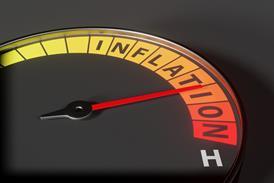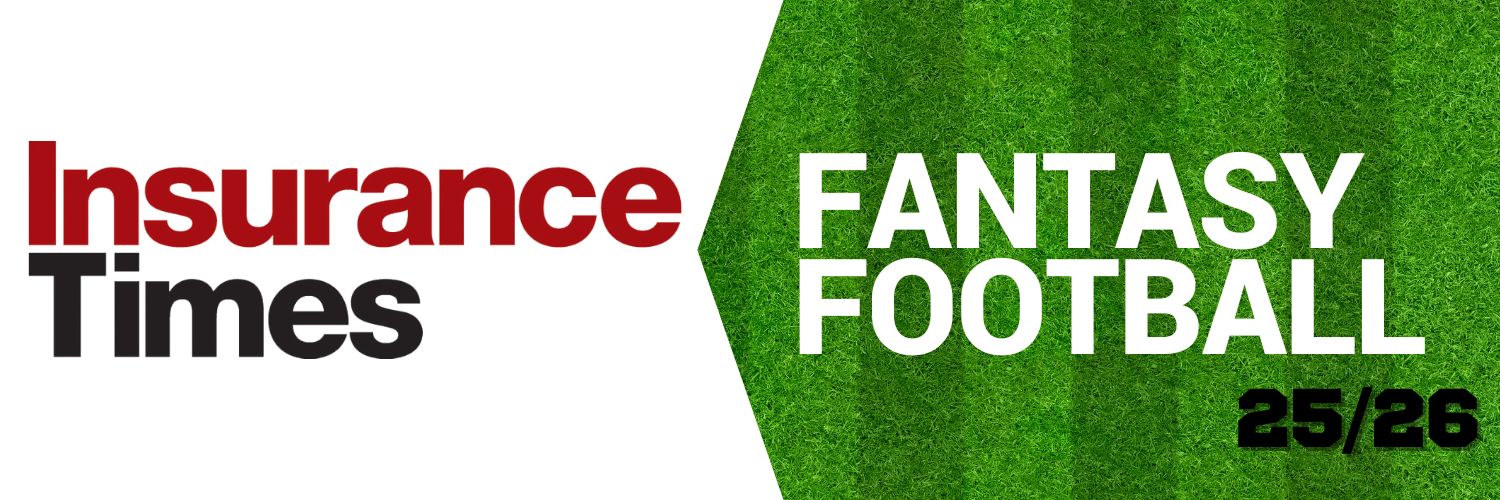Standard & Poor's is one of the world's leading credit rating agencies, their ratings are renowned for their depth and objectivity and have been developed to meet the needs of analysts concerned with key insurance markets.
The Insurance Market
The Irish domestic insurance market is one of the smaller European markets with most of the companies operating from Dublin, although others operate from the west of the country. Most Irish insurance companies have overseas owners. Five large overseas institutions, namely AXA, CGNU, Royal & Sun Alliance, Zurich and Allianz, now control approximately 80% of the general insurance market.
During the late eighties several insurers and reinsurers had severe problems. Both PMPA and Ins. Corporation of Ireland went into administration, Torchmark Re closed down its Irish operations and Dublin International Re and United Re went into liquidation.
Recent Acquisitions
On 4 Nov 1999 it was announced that the boards of Hibernian Group and CGU plc had agreed the terms of a bid by CGU plc for the entire share capital of Hibernian Group plc. The offer was declared unconditional on 20 Jan 2000 following shareholder and regulatory approval. Following the acquisition, the specialist reinsurer of Hibernian Group, Hibernian Re, stopped underwriting in 2000. In May 2000 CGU merged with Norwich Union to create CGNU plc, which is the UK's largest insurance group. During 2000 Norwich Union's Irish operations were transferred to Hibernian and the company is now in run-off. Also during 2000 Friends First left the non-life insurance market and the business previously written by Friends First General was acquired by Hibernian.
In May 1999, the French group, AXA, acquired Guardian Royal Exchange plc, UK, the former ultimate parent of Guardian PMPA through its UK arm, Sun Life and Provincial Holdings. As a result Guardian PMPA Insurance Ltd changed its name and with effect from 22 May 2000 was known as AXA PMPA Insurance Ltd.
Allianz acquired Church & General (C&G) in Dec 1998 following the acquisition of a 51% stake in Assurances Generales de France, the former ultimate parent of C&G, by Allianz during 1998.
Performance
In contrast to other large European insurance markets, non-life premium continues to rise in Ireland, reflecting the growth in the economy. Non-life gross premium written rose by 17% in 1999 to IR£ 1,649.2 m. For 1999 a hardening of rates across all classes was seen as companies sought to reduce underwriting losses to balance out lower investment returns.
The underwriting performance of the Irish non-life insurance sector has deteriorated over recent years and the combined ratio has worsened from 111% in 1996 to 115% in 1999. Private motor and commercial motor business has performed especially badly over this period. In particular, 1999 saw a significant worsening of the results in private motor. AXA PMPA made a IR£ 65 m provision in respect of technical reserves relating to motor business written in prior years. Liability business has also reported worsening losses in recent years.
After taking into account investment income the non-life sector continues to report operating profits. The return on equity (pretax profit/average shareholders' funds) has, however, worsened from 17% in 1996 to 8% in 1999. 1999 was heavily impacted by the losses at AXA PMPA.
The adjusted shareholders' funds fell by 11% in 1999 largely due to the poor performance of AXA PMPA, which experienced heavy unrealised losses on investments and deterioration of technical reserves relating to motor business.
The market's solvency margin worsened by 46 points in 1999 to 180% due to a combination of rising premiums written and falling adjusted shareholders' funds.
MARKET FEATURES
IFSC
In 1987 the Industrial Development Agency of Ireland (IDA) launched the International Financial Services Centre (IFSC) as part of an urban renewal scheme around the Custom House Docks. Activities which qualify for registration in the Centre are Insurance, Banking and Asset Financing, Corporate Treasury and Collective Fund Management. It offers to all existing certified corporates an incentive corporate tax rate of 10%, which is operational until December 2005 and is only applicable to international business, subject to approval from the IDA and the Minister of Finance.
For all corporates certified between 1 August 1998 and 31 December 1999, an incentive corporate tax rate of 10%, until 31 December 2002, will apply, with a new rate of 12.5% operating from 1 January 2003 for all trading activities in the economy. On the insurance side, the Centre was initially promoted as a captive domicile, but it has gained a lot of interest from the reinsurance and direct writing, life and non-life, sectors. Insurers based at the Centre include QBE, Hannover Re, E&S Re, Cologne Re and HDI Re.
Cross-border insurance
Ireland is a pioneer in cross-border insurance business in the EU, benefiting from the EU Directive allowing freedom to provide services. This accounts for approximately 15% of Irish insurance companies turnover, which is likely to be boosted further by the advent of the Euro.
Insurance brokers
Although most insurance in Ireland is sold through insurance intermediaries, be they brokers, agents or tied-agents, direct selling is not a new concept there. There are currently seven direct selling insurance companies. Brokers have been self-regulated since 1989 by either the Irish Brokers Association or the Insurance Intermediary Compliance Bureau, which was established in 1990. In addition there is a non-statutory Code of Conduct for Insurance Intermediaries, compliance with which is mandatory. Since August 1998 insurance intermediaries have complied with the provisions of the Investor Compensation Act, 1998. Brokerage is capped at 5% of gross premium for motor business, 15% for household, 6% for employers' liability and 10% for public liability.
Insurance Compensation Fund
An Insurance Compensation Fund was set up in 1964 to meet liabilities of insolvent insurers and is funded by contributions from insurers. Initially the levy was 2% of gross direct premiums; this was reduced to 1% in 1992 and dispensed with altogether at the end of 1992, as it was felt sufficient funds had been collected to successfully complete the administration of Primor plc. Over recent years the Fund has made advances to ICAROM plc (formerly Insurance Corporation of Ireland plc) and Primor plc (formerly PMPA Insurance plc), which are both under administration, and which between them owed the Fund IR£326m at 31 December 1999.
Motor
In September 1998, a Motor Insurance Advisory Board (MIAB) was re-established after a four year gap to advise the Department of Enterprise, Trade and Employment on motor insurance costs, trends and related factors.
There is a Motor Insurers Bureau of Ireland, which compensates victims of uninsured motorists, which account for about 6% of motorists. Motor third-party liability is the only compulsory class of business.
Compensation awards
Compensation awards in Ireland for personal injury cases are among the highest in Europe. The Courts Act 1988 abolished civil juries in High Court personal injury cases, in the hope of reducing compensation awards. However, there does not appear to have been any reduction.
INSURANCE REGULATION AND SUPERVISION
Direct insurers, life and non-life, are regulated by the Department of Enterprise, Trade and Employment at:
Frederick Building
South Frederick Street
Dublin 2
www.entemp.ie
The Minister for Enterprise, Trade and Employment is the principal regulator of insurance and is responsible for granting insurance licences.
With effect from 1 April 2001, insurance intermediaries were regulated by the Central Bank; responsibility previously rested with the Department of Enterprise, Trade and Employment. The Insurance Ombudsman of Ireland handles independent resolution of disputes between policyholders and their insurers in co-ordination with the Insurance Section of the Department of Enterprise, Trade and Employment.
To be authorised, a company must show that it has sufficient capital, the necessary expertise to write insurance and a viable business plan. Supervision is exercised through examination of the financial returns submitted by the company in an effort to ensure that regulations have been conformed to during the year. In particular they must demonstrate that the extent of liabilities and the value of assets to meet those liabilities has been realistically assessed, that the assets are suitable to meet the liabilities and that the company has surplus assets to meet its prescribed solvency margin.
Authorisation to write insurance may be revoked by the Department of Enterprise, Trade and Employment if solvency falls below the minimum amount required and a viable plan for the restoration of a sound financial position has not been submitted for consideration and approval.
The Department has no jurisdiction over reinsurers, which are not regulated unless they write, or have written, some direct business. However, they are required to notify the Department of their intention to trade and must file accounts with the Companies Registration Office.
Separate licences are issued for each line of business and each licensed insurer is required to maintain an office in Ireland.
Insurance Act 2000
The Insurance Bill was published by the Department of Enterprise, Trade and Employment in December 1999. The objectives of the bill were:
The Bill was passed in 2000 and took effect from 1 January 2001, with the exception of the transfer of responsibility for insurance intermediaries from the department to the Central Bank, which took effect from 1 April 2001.
Insurance Law
Prior to the Insurance Act of 2000, the main applicable Acts were those of 1933, 1936, 1953, 1957, 1971 and 1989. These have largely been superseded by the EU regulations, which were all adopted including the 3rd Life and Non-Life Directives that were implemented from December 1994 under the European Communities (Non-Life Insurance) Framework Regulations of 1994. The directive established a single authorisation system of supervision of insurance undertakings operating throughout the EU whereby insurance undertakings transacting business on either a cross-border or branch basis will be subject to the overall supervisory authority where their head offices are located.
The European Communities (Non-Life Insurance Accounts) Regulations of 1995 outline the returns that have to be made to the Minister for Enterprise, Trade and Employment, not later than one month after the annual general meeting. The regulations replace the 1977 legislation. Returns must be made by every insurance undertaking, which holds an authorisation in Ireland and whose head office is either established in Ireland or in another country, which is not a member state of the European Union. Subject to some exclusion, in particular the disclosure of gross premiums, the returns must also be lodged in the Companies Registration Office, where they are open to inspection by any person.
With effect from the 1995 year, insurance companies' published accounts had to meet the requirements of the EU Directive on the annual accounts and consolidated accounts of insurance undertakings. These follow the same format as the UK annual accounts.
The European Communities (Insurance Undertakings Accounts) Regulations of 1996 state that the statutory accounts of insurance and reinsurance companies should be prepared and presented within a framework which provides comparability between companies across the EU.
A number of consumer protection measures are implemented under the EU directives. These include a statutory `cooling off' period of 15 days in respect of life policies, additional disclosure requirements for insurers and notification of the choice of law provisions available to policyholders. Furthermore, Unfair Terms in Consumer Contracts regulations, provided under EU law, provide substantial protection to consumers using pre-drafted standard form contracts.
The Irish Insurance Federation was established in 1986 as the trade body of the insurance industry. Its main objectives are:
All life companies and most non-life companies, writing business in Ireland, are members and its 46 member companies account for 98% of the total insurance business underwritten in Ireland.
Composite companies are not allowed to exist in Ireland and it is necessary to carry out life and non-life business through two separate companies.
All insurers incorporated under the Companies Acts must appoint auditors to examine their financial statements. Auditors are required to report whether in their opinion:
The auditors are also required to confirm that the information in the directors' report is consistent with the accounts and all necessary information and explanations have been obtained. The auditor must also report if a "financial situation" exists, at the balance sheet date, which would require the convening of an extraordinary general meeting of the company.
Auditors are also required to make a report to the Department in writing, without delay if:
ACCOUNTING CONVENTIONS
Solvency / Capital
Irish direct insurers are bound by the solvency regulations of the European Union, as applied by regulations published in 1977 and 1994.
Shareholders' funds, as defined in our reports, include paid-up capital, free reserves and the profit and loss account balance. The minimum capital requirement for new non-life companies is Ir£500,000 and the minimum guarantee fund for life is Ir£650,000. Equalisation reserves are not given special tax treatment.
Asset Valuation
Assets are shown at cost or valuation less depreciation in the returns to the Department of Enterprise, Trade and Employment. In the annual report and accounts, they are generally shown at cost, less any provision for diminution in value, and, where possible, we have adjusted shareholders' funds by adding the excess of market value above cost.
Owner occupied land and buildings were previously valued at cost less provision for depreciation. However, following the implementation of the EU accounts directive, owner occupied buildings are valued at open market value. The aggregate surplus or deficit on revaluation is taken to the revaluation reserve. The basis for valuation of properties held for investment purposes remains at market value.
Prior to the introduction of the EU directives, 90% of investments had to be held locally. Since the introduction of the directives, they can be held anywhere in the EU, but they are generally held in Ireland.
Technical Reserves
Technical reserves must be maintained in Ireland in approved assets as demanded by the 1994 Regulations. Traditionally accepted methods are used for the calculation of reserves. Companies reserve on a net basis, but the Department has the power to tell a company to reserve on a gross basis if unhappy about the quality of its reinsurers. Five-year accounting has been introduced for captive companies in the IFSC.
Gross Premiums
Gross premiums were not disclosed in the returns to the Department of Enterprise, Trade and Employment and in some shareholders' reports and accounts, prior to the implementation of the EU Directive on the contents of annual accounts.
Standard & Poor's Sovereign Rating
Publication Date: 07-Nov-2000
Analyst: David Cooling, London (44) 20-7826-3730; Konrad Reuss, London (44) 20-7826-3523
Credit Rating AA+/Positive/A-1+
Rationale
The ratings on the Republic of Ireland are supported by its: robust general government finances; modern, open, export-oriented, and increasingly flexible economy; and above-average economic growth.
Buoyant growth in general government revenues will continue to offset successive increases in capital expenditures, maintaining a general government surplus in excess of 3% of GDP over the near term. The ratio of general government debt to GDP is forecast to fall to 28% by 2002 from 50% in 1999, reflecting large general government surpluses and vigorous economic growth. Within the EMU 11, only Luxembourg is forecast to have a lower ratio of debt to GDP in 2000. A general government surplus equivalent to 3.6% of GDP is forecast for 2000, with further surpluses averaging 3.9% over the medium term. In addition, the newly established National Pension Reserve Fund is expected to improve the long-term sustainability of public finances in the face of an ageing population.
Inward investment, a stable business environment, and a rapidly expanding labour force have supported robust economic growth and structural change over the past decade. Over the medium term, Ireland's demographic profile is forecast to sustain domestic demand and real gross national product (GNP) growth, which are expected to grow by about 7.5% and 6.6%, respectively. Exports are forecast to reach 89% of GDP in 2000. Growth in high-tech industries--characterized by strong competition and short product life cycles--continues to diversify Ireland's export base and improve economic flexibility.
Although wage pressure is expected to result in a gradual decline in competitiveness (required to moderate demand and to return growth to sustainable levels), Ireland's international competitiveness will remain robust, supported by: a highly skilled workforce; flexible labour markets; and comparatively low union membership.
Outlook
The outlook reflects prolonged structural economic change, reflected in the rapid convergence of per capita incomes with similarly rated sovereigns, large budget surpluses, and a substantial reduction in the public debt burden.
An upgrade of Ireland's ratings remains contingent on the government's ability to maintain sound fiscal balances, while simultaneously addressing the infrastructure deficit and moderating excess demand. On the other hand, failure to adhere to medium-term fiscal targets, widespread excessive wage settlements and inflationary pressure, or delays in the implementation of the National Development Plan could impede an upgrade.
STANDARD & POOR'S RATING DEFINITIONS
Sovereign Debt Rating
A sovereign debt rating reflects a government's ability and willingness to repay publicly issued debt in a timely manner, and is based on the country's overall creditworthiness. Ratings indicate future debt servicing capacity, and therefore, Standard & Poor's rating methodology is forward looking. Sovereign credit analysis may be divided into two broad components: political and economic risk.
Political risk addresses willingness of a sovereign to repay debt on time. Willingness to repay is a factor that distinguishes sovereign credits. As a result of political considerations, sovereign governments may choose not to repay their debt in a timely fashion even though they posses the economic capacity to do so. Economic risk addresses the government's ability to repay its obligations.
The sovereign rating establishes a rating ceiling for all debt issues by entities domiciled in the country. The ceiling concept reflects the government's wide range of power and resources that render its credit standing superior to any other debtor in the nation. In the case of external obligations, the sovereign government has first claim on the country's foreign exchange reserves, and controls the ability if any person in that country to obtain and send funds abroad to repay foreign obligations. For domestic obligations, the government has virtually unlimited taxing authority and the right to issue local currency. Given these considerations, Standard & Poor's does not rate the debt of any entity higher than the rating of its sovereign government. However, debt of other issues may be rated equal to that of the sovereign.
Long Term Foreign and Local Currency Debts
This is an assessment of the probability of timely payment of principal and interest according to the terms of the debt issue. It is an appraisal of default risk only. Transfer risk, like currency risk, generally will not be incorporated in the ratings. Rating distinction between an issuer's local and foreign currency debt, when they occur, reflect the different credit risks of the two types of debt instrument
Insurer ratings
Standard & Poor's employs one of two approaches when rating the financial strength of insurers and reinsurers outside the United States. The difference between the approach lies in the amount and type of information that our analysts can expect to receive.
Insurer Financial Strength Ratings
Standard & Poor's most comprehensive approach, an Insurer Financial Strength Rating is a public rating that is assigned through a process involving the voluntary participation of an insurer. Standard & Poor's maintains specialist insurance analytical teams in New York, Mexico City, Buenos Aires, London, Frankfurt, Melbourne, Tokyo and Singapore, and at least two Standard & Poor's insurance analysts work directly on each Insurer Financial Strength Rating. Many other professionals provide support and participate in the rating decision. The rating process includes a review of publicly available financial and other information.
Importantly it also includes extensive contact between Standard & Poor's analysts and the insurer's management. These meetings and other contact provide management with opportunity to discuss strategies and to indicate company strengths that may not be fully apparent from the financial statements alone. They also present Standard & Poor's analysts with an opportunity to probe for weaknesses, question strategies, and challenge management's view of strengths. Meetings with management typically extend to a full day, preceded by significant preparatory work, and often followed by additional exchanges of information. Hence, this interactive rating is our most informed opinion of an insurer's financial strength.
In order for an Insurer Financial Strength Rating to be assigned, an insurer's voluntary participation in the process must extend beyond the initial analytical work. There must also be a willingness to cooperate with Standard & Poor's ongoing financial strength surveillance process, involving an update meeting between insurer management and Standard & Poor's analysts on at least an annual basis. A Standard & Poor's Insurers Financial Strength Rating is subject to review and possible change at any point when an insurers performance differs appreciably from that which was anticipated in assigning the rating.
Because Standard & Poor's Insurer Financial Strength Ratings are based in part on information available only from an insurer's management these ratings are voluntary. But not all insurers or reinsurers have elected to undergo this form of scrutiny by Standard & Poor's. In order to provide insureds, cedents and brokers with an opinion about the financial strength of these insurers or reinsurers, we provide Public Information ratings on non-U.S. insurers or reinsurers.
Public Information ratings
Public Information ratings are produced by analysts based in the New York, Melbourne, Singapore, Tokyo and London offices of Standard & Poor's Insurance Ratings. Public Information Ratings are based on a sophisticated analysis of each insurer or reinsurer's published financial statement, as well as additional information in the public domain or provided in writing by management for public dissemination. They do not, however, reflect in-depth meetings with senior management of the rated companies.
Although these ratings are based on less comprehensive levels of information than the Insurer Financial Strength Rating, they, nevertheless, provide a clear insight regarding each insurer's or reinsurer's financial strength.
Rating Definitions
A Standard & Poor's Insurers Financial Strength Rating is a current opinion of the financial security characteristics of an insurance organisation with respect to its ability to pay under its insurance policies and contracts in accordance with their terms. This opinion is not specific to any particular policy or contract, nor does it address the suitability of a particular policy or contract for a specific purpose or purchaser. Furthermore, the opinion does not take into account deductibles, surrender or cancellation penalties, timeliness of payment, or the likelihood of the use of a defence such as fraud to deny claims. For organisations with cross-border or multinational operations, including those conducted by subsidiaries or branch offices, the ratings do not take into account potential that may exist for foreign exchange restrictions to prevent financial obligations from being met.
Insurer Financial Strength Ratings are based on information furnished by rated organisations or obtained by Standard & Poor's for other sources it considers reliable. Standard & Poor's does not perform an audit in connection with any rating and may on occasion rely on unaudited financial information. Ratings may be changed, suspended, or withdrawn as a result of changes in, or unavailability of such information or based on other circumstances.
Insurer Financial Strength Ratings do not refer to an organisation's ability to meet nonpolicy (i.e. debt) obligations. Assignment of ratings to debt issued by insurers or to debt issues that are fully or partially supported by insurance policies, contracts or guarantees in a separate process from the determination of Insurer Financial Strength Ratings, and follows procedures consistent with issue credit rating definitions and practices. Insurer Financial Strength Ratings are not a recommendation to purchase or discontinue any policy or contract issued by an insurer or to buy, hold, or sell any security issued by an insurer. A rating is not a guarantee of an insurer's financial strength of security.
Insurer Financial Strength Ratings Grades
An insurer rated `BBB' or higher is regarded as having financial security characteristics that outweigh any vulnerabilities, and is highly likely to have the ability to meet financial commitments.
AAA
An insurer rated `AAA' has EXTREMELY STRONG financial security characteristics. `AAA' is the highest Insurer Financial Strength Rating assigned by Standard & Poor's.
AA
An insurer rated `AA' has VERY STRONG financial security characteristics, differing only slightly from those rated higher.
A
An insurer rated `A' has STRONG financial security characteristics, but is somewhat more likely to be affected by adverse business conditions than are insurers with higher ratings.
BBB
An insurer rated `BBB' has GOOD financial security characteristics, but is more likely to be affected by adverse business conditions than are higher rated insurers.
An insurer rated `BB' or lower is regarded as having VULNERABLE characteristics that may outweigh its strengths. `BB' indicates the least degree of vulnerability with the range; `CC' the highest.
BB
An insurer rated `BB' has MARGINAL financial security characteristics. Positive attributes exist, but adverse business conditions could lead to insufficient ability to meet financial commitments.
B
An insurer rated `B' has WEAK financial security characteristics. Adverse business will likely impair ita ability to meet financial commitments.
CCC
An insurer rated `CCC' has VERY WEAK financial security characteristics, and is dependant on favourable business conditions to meet financial commitments.
CC
An insurer rated `CC' has EXTREMELY WEAK financial security characteristics and is likely not to meet some of its financial commitments.
R
An insurer rated `R' has experienced a REGULATORY ACTION regarding solvency. The rating does not apply to insurers subject only to nonfinancial actions such as market conduct violations.
NR
An insurer designated `NR' is NOT RATED, which implies no opinion about the insurer's financial security.
Plus (+) or minus (-) signs following ratings from `AA' to `CCC' show relative standing within the major rating categories.
CreditWatch highlights the potential direction of a rating, focusing on identifiable events and short-term trends that cause ratings to be placed under special surveillance by Standard & Poor's. The events may include mergers, recapitalisations, voter referenda, regulatory actions, or anticipated operating developments. Ratings appear on CreditWatch when such an event or a deviation from an expected trend occurs and additional information is needed to evaluate the rating. A listing, however, does not mean a rating change is inevitable, and whenever possible, a range of alternative ratings will be shown. CreditWatch is not intended to include all ratings under review, and rating changes may occur without the rating having first appeared on CreditWatch. The "positive" designation means that a rating may be raised; "negative" means that a rating may be lowered; "developing" means that a rating may be raised, lowered or affirmed.
`pi' Ratings, denoted with `pi' subscript, are Insurer Financial Strength Ratings based on an analysis of published financial information and additional information in the public domain. They do not reflect in-depth meetings with an insurer's management and are therefore based on less comprehensive information than ratings without a `pi' subscript. `pi' ratings are reviewed annually based on a new years financial statements, but may be reviewed on an interim basis if a major event that may affect an insurer's financial security occurs. `pi' ratings are not subject to potential CreditWatch listings.
The next to a company's rating in the list means that this company is a Standard & Poor's Security Circle Insurer. Security Circle insurers voluntarily underwent Standard & Poor's most comprehensive review and have achieved one of its four top rating catagories. In addition, the company has agreed to cooperate with Standard & Poor's ongoing monitoring of its financial condition.
April 2001. Ireland Insurance Analyst contacts:
Simon Marshall London +44 20 7847 7080
Jonathan Bint London +44 20 7847 7071









































